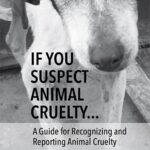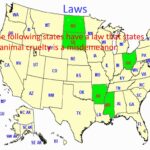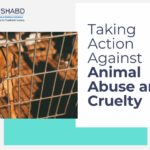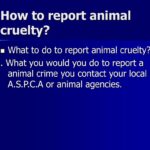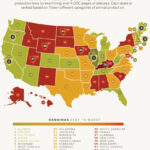As consumers become increasingly cognizant of the ethical implications of their purchases, the demand for cruelty-free products has surged exponentially. This trend is not merely a passing fancy but rather a profound shift in consumer consciousness highlighting the need for transparency in product sourcing and production. With this evolving landscape, recognizing the various symbols that signify cruelty-free certification has become paramount for conscientious shoppers. So, what is the name of the animal cruelty-free symbol? This guide will elucidate the significance of these symbols, providing clarity amidst a sea of options.
At the forefront of this compassionate movement are symbols that denote products free from animal testing. The most recognizable of these is the Leaping Bunny logo. This certification, sanctioned by the Coalition for Consumer Information on Cosmetics (CCIC), represents a stringent standard for cruelty-free practices. When consumers see this emblem, they can rest assured that no animal testing was conducted at any stage—neither by the company nor its suppliers. The Leaping Bunny stands as a testament to transparency and a declaration of commitment against animal cruelty.
Another widely known symbol is the Vegan Action logo. This seal denotes products that not only abstain from animal testing but are crafted without any animal-derived ingredients. For many, this distinction is essential as dietary and ethical choices intertwine. While the Leaping Bunny focuses on testing practices, the Vegan Action symbol scrutinizes the entire composition of the product, ensuring that cruelty is absent from both process and ingredients.
It’s prudent to distinguish between these symbols, as consumers often conflate them. The Leaping Bunny signifies that animals were not the subject of testing, while the Vegan Action symbol emphasizes a product devoid of all animal derivatives. This distinction allows conscientious consumers to make informed choices that align with their ethical values and lifestyle preferences.
Beyond these prominent logos, there are numerous other certifications circulating within the marketplace. For instance, the PETA’s Cruelty-Free Bunny also signifies that a product has not been tested on animals. However, there is an important caveat: products boasting the PETA certification may still contain animal-derived ingredients. Thus, for those who are strictly vegan, this symbol might not suffice.
Another notable symbol is the Certified Humane label, which, while primarily targeted at animal welfare in agricultural practices, conveys compliance with specific humane standards. This certification guarantees that animals used for food products were raised in a manner that adheres to ethical guidelines. Although it is essential for those concerned with eating habits, it does not directly relate to the cruelty-free movement in the context of cosmetics or household items.
Now, as consumers delve deeper into their purchasing decisions, they may also encounter terms like “not tested on animals” or “cruelty-free.” However, these phrases can be nebulous and often lack standardization. Unlike the symbols mentioned earlier, they do not guarantee that brands follow thorough cruelty-free protocols. This ambiguity can mislead consumers into believing that such statements equate to verified cruelty-free status. Hence, always seeking out recognized certifications is crucial when navigating the complex world of ethical consumerism.
Moreover, understanding the global scope of these symbols is vital. Different regions boast their own cruelty-free certification bodies, resulting in a varied landscape of logos. For example, in Europe, the European Union’s Leaping Bunny program mirrors the CCIC’s standards, yet carries its own nuances in terms of compliance and verification. Consequently, it’s beneficial to cultivate knowledge about these international variations, especially for those who shop globally.
As the movement continues to grow, so does the plethora of companies adopting cruelty-free practices. Awareness campaigns and consumer demand have incentivized many brands to become more transparent about their sourcing and testing methodologies. Consequently, individuals can discover an array of products—from household cleaners to cosmetics—that align with their values, all thanks to the diligence exercised by animal advocates and conscious consumers alike.
In an era where informed choices reign supreme, it is incumbent upon each consumer to stay vigilant. Investigating products, confirming certifications, and understanding the implications of symbols allow for a more empowered purchasing approach. As consumers seek to positively impact the world with their choices, recognizing the name of the animal cruelty-free symbol—and the values it represents—becomes an instrumental part of that journey.
In conclusion, the journey towards a cruelty-free lifestyle involves more than merely seeking out labels; it encompasses fostering a deeper understanding of what those symbols signify. With logos like the Leaping Bunny and Vegan Action leading the charge, conscious consumers are equipped with the necessary tools to navigate the marketplace ethically. Perhaps most importantly, every small choice—diligently made—has the potential to instigate sweeping change across industries and cultures, lending a voice to those who cannot speak for themselves. As awareness proliferates, consumers can stride forward with purpose, guided by symbols that reflect their values and commitment to a compassionate world.
